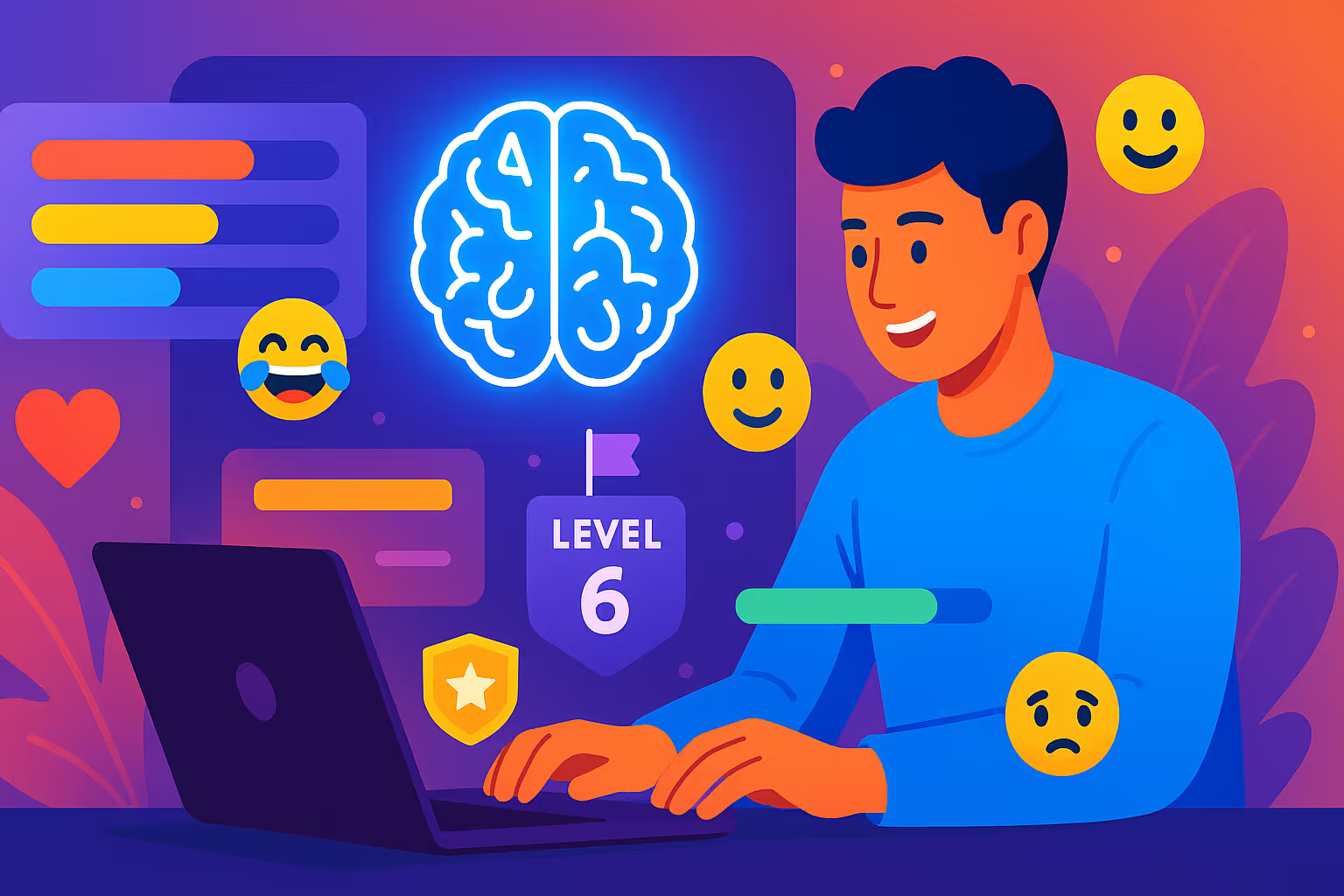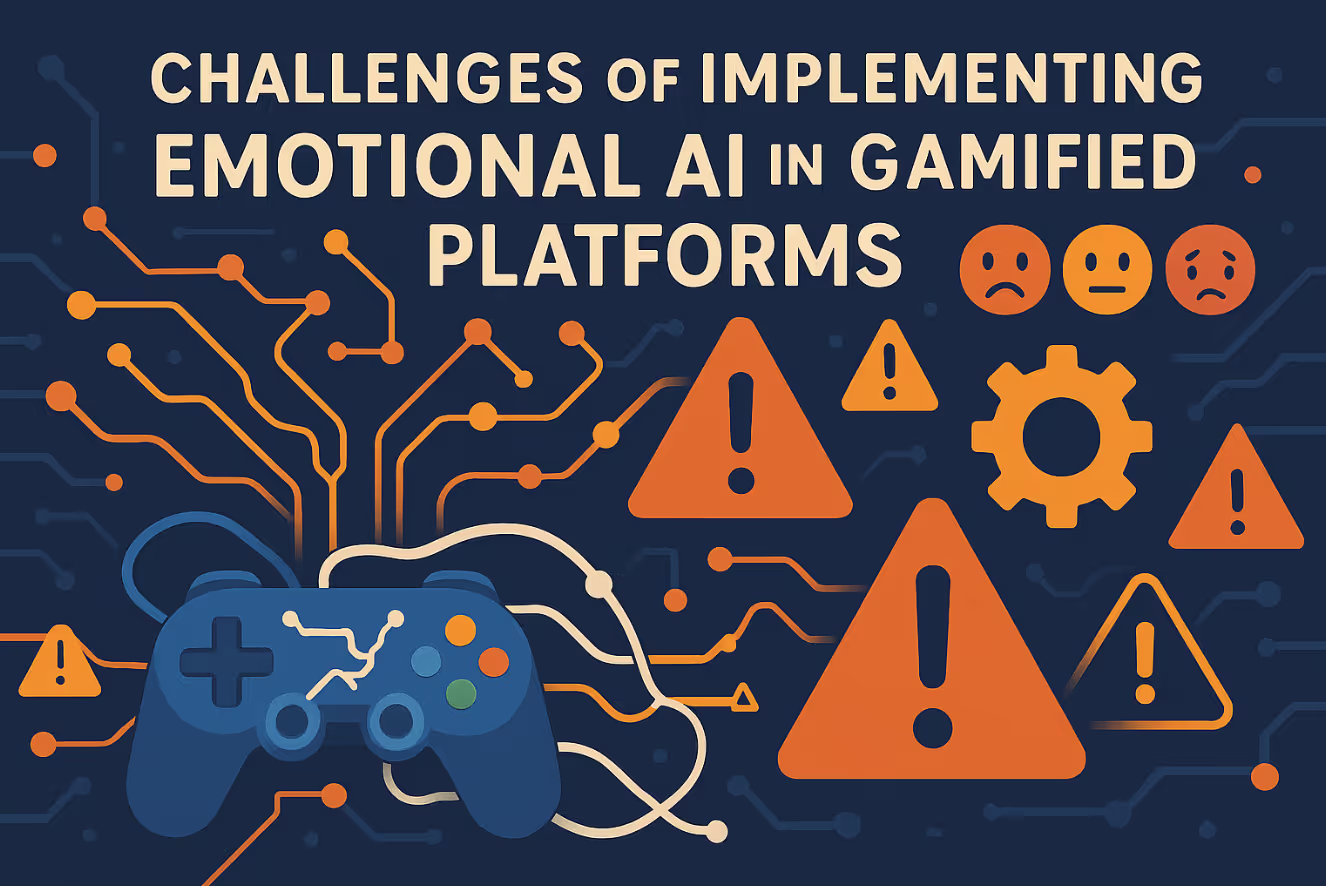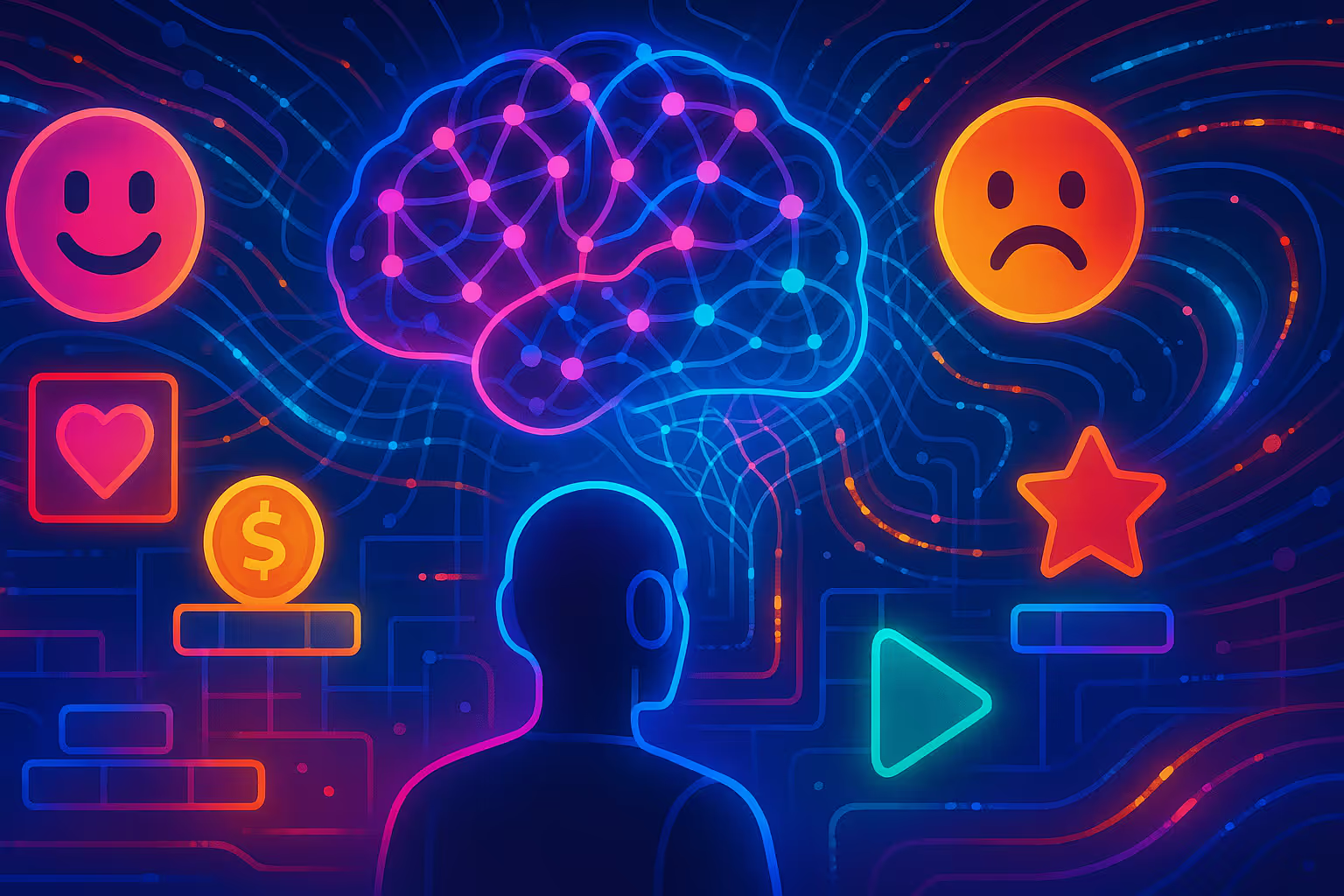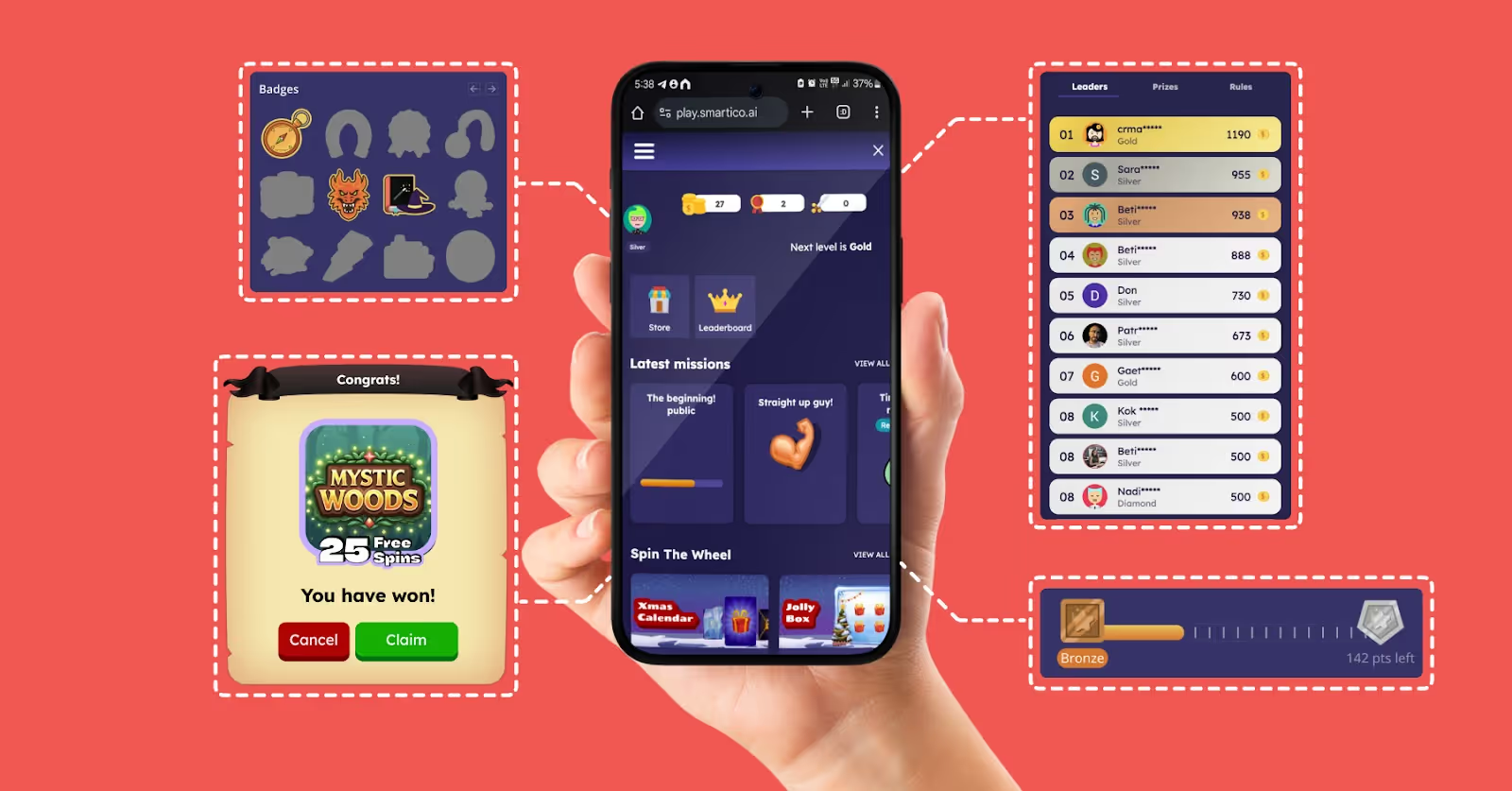Implementing Emotional AI in Your Gamification Strategy
.avif)
Emotional artificial intelligence is changing how players connect with digital experiences. Modern iGaming platforms and online casino games now use AI systems that recognize player emotions in real time to create more engaging and personalized gameplay.
The marriage between emotional AI and gamification represents a fundamental shift in player engagement. Traditional reward systems and leaderboards are powerful, but they miss a crucial element: understanding how players actually feel during gameplay.
Understanding Emotional AI Technology

Emotional AI, also known as affective computing, analyzes human emotions through multiple channels. The technology interprets facial expressions, voice patterns, physiological signals, and even typing behaviors to gauge emotional states.
Machine learning algorithms process this emotional data using natural language processing and computer vision. The systems identify patterns in emotional responses, learning to predict and respond to player feelings with increasing accuracy.
Key components of emotional AI include facial recognition software that tracks micro-expressions, voice analysis that detects tonal changes, and physiological monitoring through wearable devices that measure heart rate and stress levels. These technologies work together to create a comprehensive emotional profile of each player.
Modern platforms can detect emotions like frustration, excitement, boredom, and satisfaction within milliseconds. This real-time capability allows games to adapt immediately to player emotional states, creating dynamic experiences that traditional static systems cannot match.
The Psychology Behind Gamification and Emotions

Gamification touches our deepest human motivations through point systems, badges, leaderboards, and challenges. These elements trigger dopamine release in the brain, thus leading to positive reinforcement loops that encourage continued engagement.
Research shows that gamified experiences activate the brain's reward system, releasing neurotransmitters associated with pleasure and motivation. When players complete tasks or achieve milestones, their brains respond with satisfaction signals that encourage repetition.
{{cta-banner}}
The psychological foundation of gamification rests on both intrinsic and extrinsic motivation. Extrinsic rewards like points and prizes provide immediate gratification, while intrinsic motivation comes from mastery, progress, and social connection.
Emotional AI enhances these psychological mechanisms by adapting rewards and challenges based on real-time emotional feedback. If a player shows signs of frustration, the system can offer hints or reduce difficulty. When excitement peaks, the platform might increase challenges to maintain engagement.
Benefits of Emotional AI in Gamified Platforms

- Player retention improves massively when platforms understand and respond to emotions. Studies indicate that emotionally aware systems can reduce player churn by identifying at-risk users before they abandon the platform.
- Personalization reaches new levels with emotional intelligence. Instead of one-size-fits-all approaches, platforms can customize everything from game difficulty to reward timing based on individual emotional patterns.
- Real-time adaptation creates more immersive experiences. Games can modify storylines, adjust character interactions, and alter environmental elements based on player emotional responses. This dynamic approach keeps players engaged longer than static content.
- Revenue optimization becomes more effective when platforms understand player emotions. Operators can time promotional offers when players are most receptive, avoiding moments of frustration that might lead to negative associations.
- Customer satisfaction increases when players feel understood and supported. Emotional AI enables platforms to provide empathetic responses during difficult moments and celebrate achievements when players succeed.
Practical Implementation Strategies

- Start with clear objectives for emotional AI integration. Define what emotional states you want to detect and how the system should respond. Common goals include reducing player frustration, increasing engagement time, and improving overall satisfaction.
- Choose appropriate detection methods based on your platform capabilities. Webcam-based facial recognition works well for desktop users, while mobile platforms might focus on touch patterns and typing behaviors. Voice analysis can be effective for platforms with audio communication features.
- Implement gradual rollouts rather than system-wide changes. Begin with simple emotional detection in specific game areas, then expand based on results. This approach allows for testing and refinement without overwhelming players or developers.
- Create response protocols for different emotional states. Develop specific actions for when players show frustration, boredom, excitement, or confusion. These might include difficulty adjustments, hint systems, or social features that connect players with similar interests.
- Integrate emotional data with existing gamification elements. Use emotional insights to optimize point systems, badge awards, and leaderboard positioning. Time rewards when players are most likely to appreciate them based on emotional context.
- Train your team on emotional AI principles and implementation. Staff should understand how the technology works and how to interpret emotional data responsibly. Regular training ensures consistent application across your platform.
Addressing Implementation Challenges

Privacy concerns require transparent communication with players. Clearly explain what emotional data you collect, how it's used, and what benefits players receive in return. Implement opt-in systems that respect player choice about emotional monitoring.
Data security must be robust when handling emotional information. Emotional data is highly sensitive and requires encryption, access controls, and strict retention policies. Regular security audits help maintain player trust.
Accuracy limitations affect all emotional AI systems. Current technology can misinterpret emotions, especially across different cultures and individual expression styles. Build in human oversight and feedback mechanisms to correct errors.
Bias mitigation requires diverse training data and ongoing monitoring. Emotional AI systems can perpetuate biases if trained on limited datasets. Regular testing with diverse user groups helps identify and address these issues.
Technical integration challenges arise when connecting emotional AI with existing systems. Work with experienced developers who understand both gamification platforms and emotional AI technologies. Plan for extended testing periods to ensure smooth operation.
Cost considerations include both initial implementation and ongoing maintenance. Emotional AI requires computational resources and specialized expertise. Budget for training, integration, and system optimization.
Future Trends and Considerations

Advanced emotional modeling will become more sophisticated. Future systems will understand complex emotional states like anticipation mixed with anxiety or pride combined with competitiveness. This nuanced understanding will enable more precise responses.
Multi-modal emotion detection will combine multiple input streams for better accuracy. Systems will analyze facial expressions, voice, text, and physiological signals simultaneously to create comprehensive emotional profiles.
Predictive emotional analytics will anticipate player needs before emotions change. Machine learning algorithms will identify patterns that predict emotional shifts, allowing proactive adjustments rather than reactive responses.
Cross-platform emotional continuity will track player emotions across different games and devices. This comprehensive approach will create consistent experiences regardless of how players access your platform.
Ethical frameworks will become more important as emotional AI capabilities expand. Industry standards will emerge for responsible emotional data use, privacy protection, and bias prevention.
Regulatory compliance will shape emotional AI implementation. Governments are developing guidelines for AI systems that process emotional data, particularly in industries like iGaming where player protection is crucial.
The Role of Smartico.ai in Emotional Gamification

Smartico.ai stands as the industry's first unified Gamification and CRM Automation platform specifically designed for iGaming operators. The platform combines advanced CRM automation with a giant arsenal of gamification tools, creating a foundation for emotional AI integration.
Our platform offers real-time player data processing capabilities that align perfectly with emotional AI requirements. Operators can track player behavior patterns, engagement levels, and response times - all valuable inputs for emotional AI systems.
Advanced segmentation features in Smartico enable targeted emotional responses. The platform's AI-powered models can predict player lifetime value and churn risk, providing crucial context for emotional AI interventions. When combined with emotional data, these insights create powerful personalization opportunities.
Smartico's bonus engine allows for dynamic reward adjustment based on player state. This capability becomes even more powerful when enhanced with emotional AI data, enabling rewards that respond to both behavioral and emotional indicators.
The platform's gamification suite includes loyalty wheels, scratch cards, jackpots, and achievement systems. These elements can be programmed to respond to emotional cues, creating more empathetic and engaging player experiences.
Integration capabilities make Smartico ideal for emotional AI enhancement. The platform works with any game provider and supports custom implementations, allowing operators to add emotional AI layers without disrupting existing systems.
Multi-brand management features enable consistent emotional AI experiences across different casino brands. Operators can implement unified emotional response strategies while maintaining brand-specific customizations.
Find out how Smartico can help your business specifically drive retention and revenue through the clouds by booking your free, in-depth demo below.
{{cta-banner}}
Getting Started with Emotional AI Integration
Begin by auditing your current gamification strategy and identifying opportunities for emotional enhancement. Look for points where players commonly experience frustration, boredom, or excitement. These moments represent prime opportunities for emotional AI intervention.
Research regulatory requirements in your operating jurisdictions. Some regions have specific rules about AI systems and emotional data processing. Ensure compliance before beginning implementation.
Choose a pilot program that focuses on specific emotional states or game features. Start small with clear success metrics like player session length, satisfaction scores, or retention rates. This approach allows for learning and adjustment without major risk.
Partner with experienced technology providers who understand both emotional AI and iGaming requirements. Look for companies with proven track records in similar implementations and strong data security practices.
The future of player engagement lies in understanding and responding to human emotions. Platforms that successfully integrate emotional AI with gamification will create deeper connections with players, leading to better retention, satisfaction, and revenue outcomes. As technology continues advancing, emotional intelligence will become as important as game mechanics in creating the player experiences of tomorrow.
Did you find this article helpful? If so, consider sharing it with other industry professionals such as yourself.
Ready to use Smartico?
Join hundreds of businesses worldwide engaging players with Smartico.










